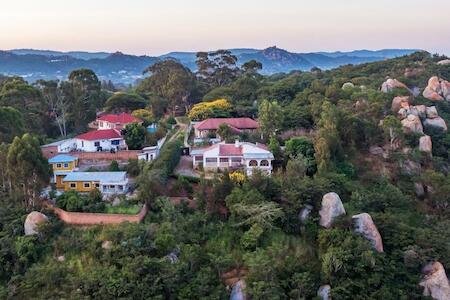Looking for budget stays in Iringa? This section is designed to save you time, money, and unnecessary stress. We've got insider tips to help you find affordable hostels and the cheapest places to stay in Iringa.

Iringa, Tanzania, is a popular stop on the way south from the lowlands in Tanzania. Iringa is at the gateway to the southern highlands, and stands at an altitude of one thousand six hundred meters on a cliff overlooking the Little Ruaha River Valley. It can get quite cold at night, which might come as a bit of a shock to those travelers coming from the parched lowland of the central plains, but there's freshness in the air during the day that will be a welcome change from the sometimes stifling heat of the plains.
Iringa is on the Tanzam Highway, about three hundred thirty kilometers northeast of Mbeya, and two hundred seventy kilometers south of Tanzania's administrative capital, Dodoma. Transport links along the highway are plentiful, with buses leaving all day north or south.
There are a couple of things of note to see in and around Iringa. Neema Crafts Centre on Hakimu Street, southeast of the Clock Tower is an initiative set up by the Anglican Church at the beginning of the twenty-first century to provide training and employment opportunities for people with disabilities. The center has eight craft workshop areas, a therapy unit for disabled children, an award-winning cafe, a conference center entirely staffed by deaf people, and a welcoming guesthouse jointly run by the local Mother’s Union. The guesthouse has hostel dorm beds, for those on a budget as well as double and twin rooms, and is well worth supporting. Free tours of the workshops can be arranged.
About twenty kilometers southwest of Iringa is Isimila Stone Age site. In the mid-twentieth century, archaeologists unearthed some of the most significant Stone Age finds ever identified. Most of these finds were tools, estimated to be between sixty thousand and one hundred thousand years old. They also found fossilized bones of mammals, including an extinct hippopotamus and something similar to the modern-day giraffe but with a shorter neck. There is a small museum with displays of some of the artifacts found here and where you can pick up your guide to take you around the site.
Ruaha National Park is a little over one hundred kilometers west of Iringa, and together with neighboring conservation areas, forms the core of a wild and extended ecosystem covering about forty thousand square kilometers and providing a home for one of Tanzania’s largest elephant populations (of around twelve thousand). The park is also home to buffalo, lesser kudus, Grant’s gazelles, wild dogs, ostriches, cheetahs, roan and sable antelopes, hippos, crocodiles, and more than four hundred different types of birds. Trips here can be arranged by your accommodation or through one of the travel agents in town.
There are a couple of hostels in Iringa, Tanzania. Dorm beds are available for the budget traveler and the Iringa, Tanzania hostels are where you can get information and make arrangements for the points of interest around the town. All hostels in Iringa, Tanzania, are centrally located close to Uhuru Park.
Written by Travel Expert Iringa
 LondonroadMa
LondonroadMa
